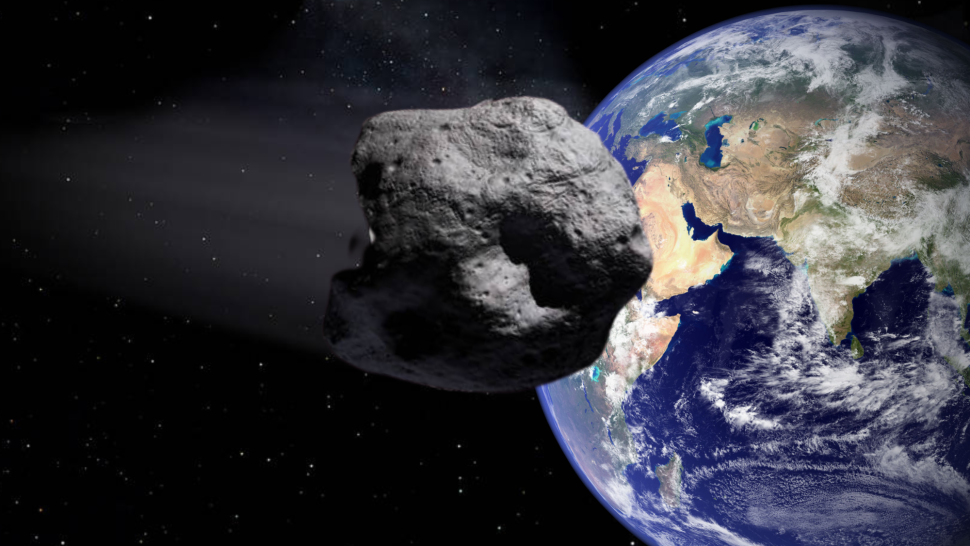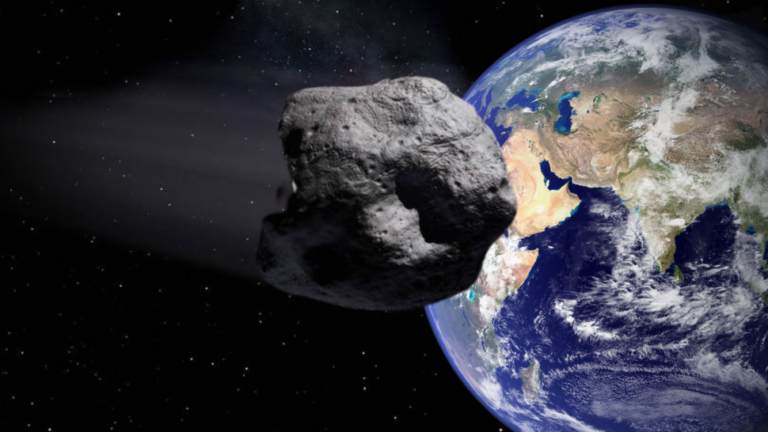Rare dark-streaked meteorites may come from a ‘potentially hazardous’ asteroid.
The unusual shock-darkened meteorites came from a fireball over Chelyabinsk, Russia, in 2013.
When a fireball burst over Chelyabinsk, Russia, in February 2013, strange, dark-veined meteorites fell to Earth. Planetary experts have recently identified a potential source for these strange meteorites’ origin: a mile-and-a-half-long near-Earth asteroid.
The black striations on the Chelyabinsk meteorites, according to scientists, are the result of a process known as shock darkening. However, only around 2% of chondrite meteorites, a common form of meteorite, exhibit shock darkening, and the origin of these asteroids has remained a mystery.

The asteroid 1998 OR2 has now been recognized by scientists as a potential source of shock-darkened meteorites. The Near-Earth Asteroid Tracking program at NASA’s Jet Propulsion Laboratory found the near-Earth asteroid in July 1998. The space rock last came within 3.9 million miles (6.3 million kilometers) of Earth in April 2020, at that time.
NASA nevertheless classifies 1998 OR2 as “possibly dangerous” despite the fact that it may not appear to be near at all because changes in the asteroid’s orbit during the following 1,000 years might make it a threat to Earth.
When fragments of an asteroid like 1998 OR2 separate and reach the Earth’s atmosphere, meteorites are produced. The finding that shock-darkened meteorites may come from a near-Earth asteroid provides insight into the different material strengths of asteroids and has implications for defending Earth from a hypothetical collision, according to the researchers.
Adam Battle, a graduate student in planetary science at the University of Arizona and the study’s lead author, said: “Shock darkening is an alteration process caused when something impacts a planetary body hard enough that the temperatures partially or fully melt those rocks and alter their appearance both to the human eye and in our data” (opens in new tab). This mechanism has frequently been observed in meteorites, but only sometimes on asteroids outside of the main asteroid belt, which is located between Mars and Jupiter.
Shock darkening was discovered on these main-belt asteroids by co-author and University of Arizona planetary scientist Vishnu Reddy. He claims that asteroids experience shock darkening far more frequently than meteorites. He stated in the statement that impact craters on asteroids and other solid bodies in the solar system were evidence that impacts had occurred often. The consequences of impact melt and shock-darkening on meteorites formed from these bodies, however, are uncommon.
Finding a near-Earth asteroid dominated by this mechanism, according to Reddy, who also co-leads the Lunar and Planetary Laboratory’s Space Domain Awareness lab, has consequences for determining the impact hazard.
Reddy stated that Adam Battle’s research has demonstrated how shock darkening might cause common chondrite asteroids to look as carbonaceous in our classification tools. When attempting to deflect a dangerous asteroid, it is crucial that these two materials have differing physical strengths.
Is asteroid 1998 OR2 chondrite or carbonaceous?
On the University of Arizona campus, Reddy, Battle, and their colleagues employed the Rapid Astronomical Pointing Telescopes for Optical Reflectance Spectroscopy (RAPTORS) to investigate the asteroid 1998 OR2.
The team gathered information on the surface composition of 1998 OR2, which had the appearance of a typical chondrite asteroid—a kind of space rock with a light tint that comprises the minerals olivine and pyroxene. However, a method for classifying asteroids indicated that 1998 OR2 seemed to be a carbonaceous asteroid. In contrast to chondrite asteroids, carbonaceous asteroids are black and featureless space rocks.
The team then started looking into the cause of this mismatch in order to identify the proper categorization.
The study to look into possible explanations for the disparity was started early on because of the mismatch, according to Battle.
They ruled out the likelihood that the asteroid’s surface had changed as a result of exposure to the space environment since this process, known as space weathering, would have left the space rock with a faint reddish tint.
The scientists came to the conclusion that shock darkening, which may cover olivine and pyroxene while darkening the asteroid’s surface and make it appear like a carbonaceous asteroid, was to blame for the discrepancy between the two study methodologies.
According to its mineralogy, the asteroid is unmistakably an ordinary chondrite that has been transformed to seem to the classification tool as a carbonaceous asteroid. Accordingly, Battle added, it is not a combination of ordinary chondrite and carbonaceous asteroids.
After the 2013 Chelyabinsk explosion seeded Earth with shock-darkened meteorites, extensive research into the late 20th-century theory of asteroidal shock darkening began.
After Reddy discovered damaged asteroids in the main asteroid belt, interest in shock darkening increased. According to the scientists, the recent finding of shock darkening in a near-Earth asteroid may spark even more curiosity in the phenomenon.
The research was published Oct. 4 in The Planetary Science Journal and presented at a conference held this week by the American Astronomical Society’s Division of Planetary Sciences..
Source: SpaceCom
Do not forget to share your opinion with us to provide you with the best posts !




0 Comments